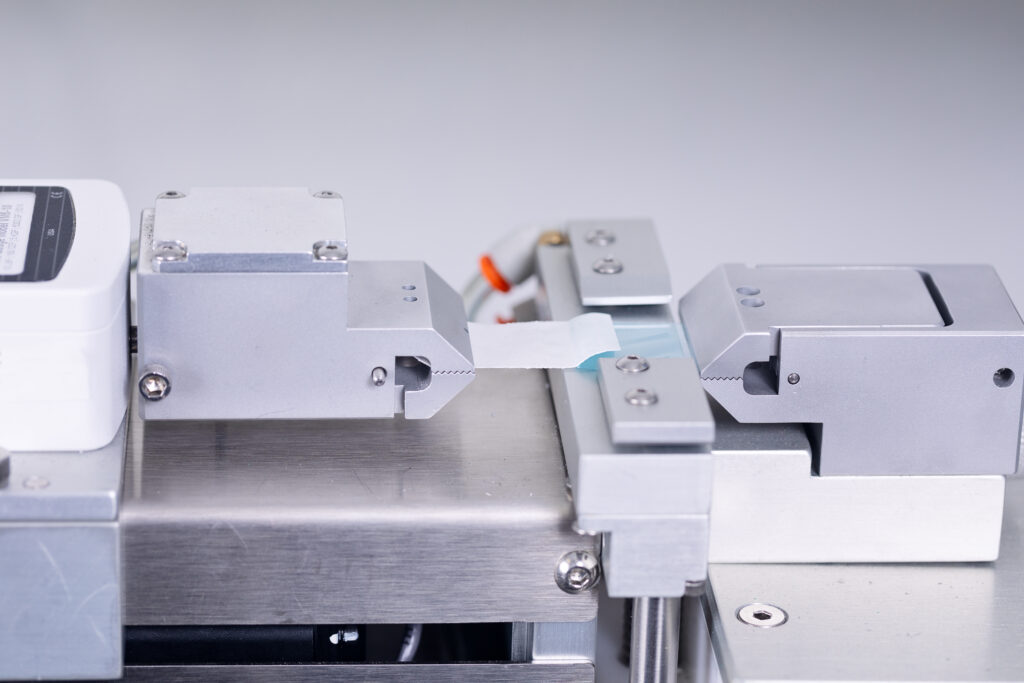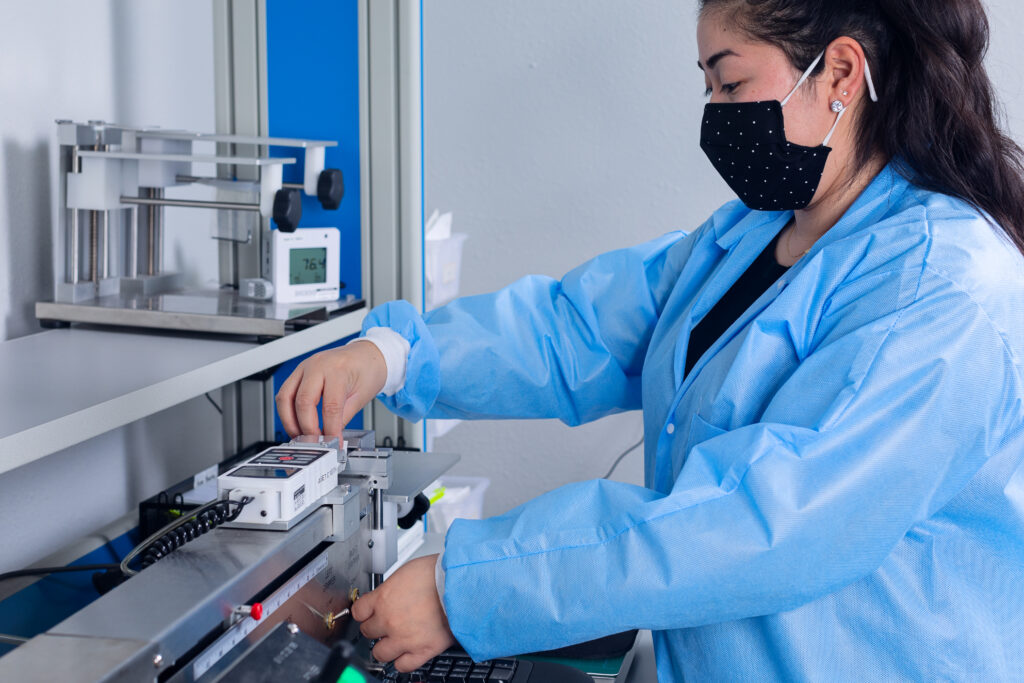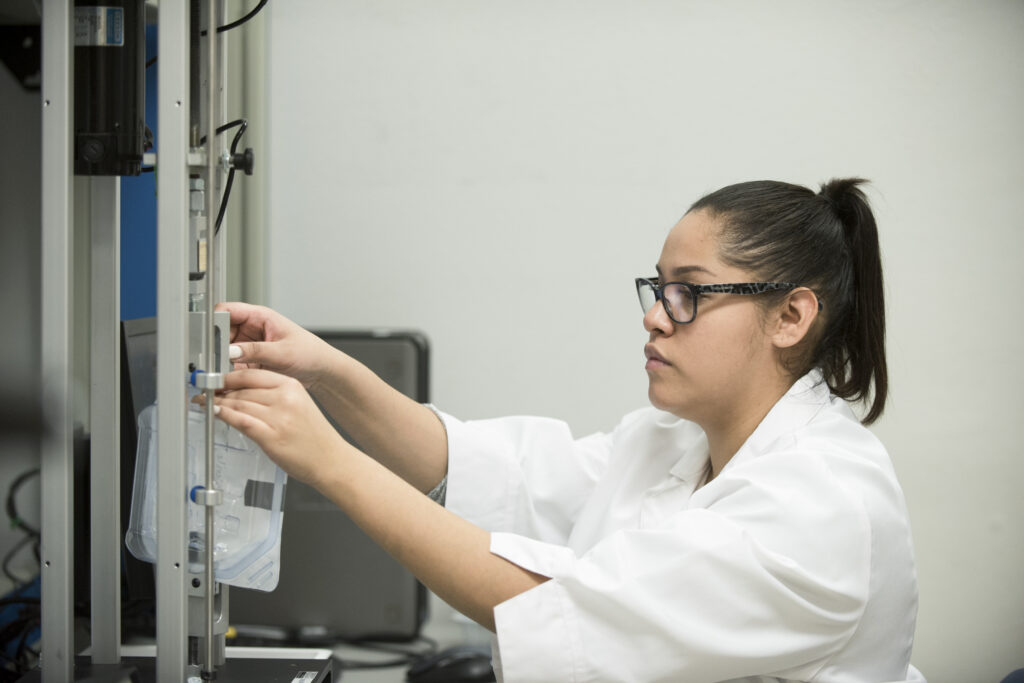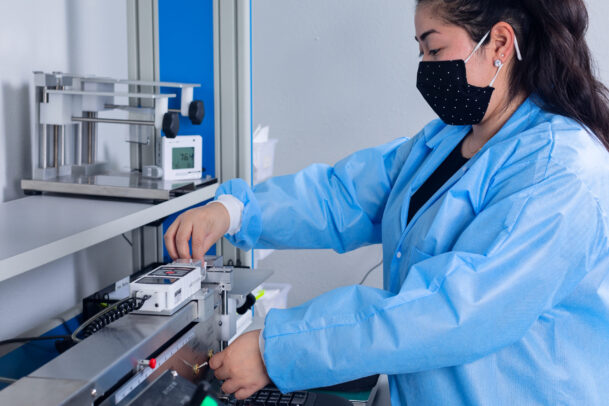Medical Device Packaging Validation Procedure: Overview
According to the U.S. Center for Disease Control and Prevention, HAIs (healthcare-associated infections) affect approximately 1.7 million patients each year, resulting in over 98,000 deaths. To preserve the sterility of medical devices, effective packaging and packaging materials are crucial. However, it’s not enough to simply design packaging that meets these criteria—the packaging must also undergo rigorous validation procedures to confirm that it performs as intended and complies with regulatory standards.
Whether you are a medical device manufacturer, packaging engineer, or healthcare professional, understanding the ins and outs of packaging validation is essential. In this article, we will provide an overview of the different medical device package validation protocols —a key element that provides documented evidence regarding the reliability, strength and integrity of medical device packaging. By taking a deep dive into the protocols, you will be equipped with the knowledge to navigate the complexities of packaging validation and ensure that your medical devices reach end-users with the highest level of safety and quality.
Let’s embark on this journey together to better understand how packaging validation contributes to the success of the medical device industry and ultimately enhances patient care.
Medical Device Packaging Validation and Its Purpose
Medical devices are integral to modern healthcare, providing life-saving treatments and improving patient outcomes. However, the packaging that houses these devices plays a critical role in maintaining their sterility, protecting them from damage, and ensuring their safe use. But how can medical device manufacturers and healthcare professionals be confident that the packaging performs as intended? By conducting medical device packaging validation —a systematic process that verifies the reliability and integrity of medical device packaging.
What is Medical Device Packaging Validation?
Medical device packaging validation is a comprehensive procedure that evaluates the effectiveness and quality of packaging equipment, materials and designs used for medical devices. It involves a series of tests and assessments to ensure that the packaging meets regulatory requirements, industry standards, and manufacturer specifications.
The validation protocol is executed in a controlled environment and follows established standards and guidelines to ensure consistency and accuracy. Typically, it includes three key stages and each of them assesses different aspects of the packaging process, from equipment installation and operational controls to the final performance of the packaging under simulated real-world conditions.
- Installation Qualification (IQ) – IQ involves verifying that the packaging equipment is installed correctly and meets the necessary design specifications.
- Operational Qualification (OQ) – OQ involves verifying that the packaging equipment operates as expected at nominal and challenge parameters.
- Performance Qualification (PQ) – PQ involves testing the packaging process over an extended period to ensure that it can consistently produce packaging that meets the necessary standards.
Packaging is the gatekeeper that preserves the safety, sterility, and integrity of the device from the factory to the hands of healthcare professionals and patients. But besides the obvious, what’s the broader significance of packaging validation and why it is so important in the medical device industry?

The Importance of Medical Device Packaging Validation
Whether it’s a simple bandage, a complex surgical instrument, or a life-sustaining implant, the packaging that encases these devices is of paramount importance.
Although ISO 11607 is a crucial standard for packaging validations in the medical device industry, it is important to look beyond it. While compliance with this standard is important for CE marking and FDA recognition, it does not fulfill all obligations of FDA’s Quality System Regulations. ISO 11607 focuses on ensuring sterile seal integrity, which is often the highest risk of failure during the journey from the manufacturer to the point of use. However, as medical devices become more complex, adherence to ISO 11607 alone may not be sufficient. In addition to maintaining the sterile barrier, the packaging must also protect the functionality of the device itself.
- Safeguarding Sterility and Preventing Contamination
Sterility is a fundamental requirement for medical devices intended for surgical procedures or direct patient contact. Medical device packaging must be designed and validated to maintain sterility until the point of use. Packaging validation verifies that the packaging is an effective barrier against microbial ingress, environmental contaminants, and moisture. Validation consists of rigorous testing and analysis so that manufacturers can reduce the risk of infections and adverse outcomes for patients.
- Complying with Regulatory Requirements and Standards
The medical device industry is subject to stringent regulatory oversight by agencies such as the U.S. Food and Drug Administration (FDA), the European Union’s Medical Device Regulation (MDR), and other global regulatory bodies. The validation protocol ensures that manufacturers adhere to these regulatory requirements and demonstrate compliance through a systematic and documented approach.
- Protecting Product Integrity and Functionality
Medical device packaging serves as the first line of defense against external factors such as mechanical stress, temperature fluctuations, humidity, light exposure, and distribution. That’s why the packaging must be designed to withstand the rigors of transportation, handling, and storage while preserving the device’s functionality and performance. The packaging requirements set forth in the validation protocol evaluate the ability of the device packaging to withstand these external factors.
- Enhancing Patient Safety and Building Consumer Confidence
Ultimately, medical device packaging validation plays a vital role in enhancing patient safety and building consumer confidence. Validation helps prevent packaging failures that could compromise patient safety, such as leaks, breaches, and inadequate labeling. It also provides assurance to healthcare professionals and patients that the medical devices they use are safe, reliable, and of high quality. Validation also serves as a proactive approach to identifying and addressing potential issues, mitigating risks, and continuously improving packaging designs and processes.
Medical device packaging validation is an integral and indispensable part of the overall medical device development and manufacturing process. Now, let’s explore its key components.
The Key Components of Medical Device Packaging Validation
In order to ensure that packaging meets the necessary requirements, it is important to understand the key components of the validation process. These components include but are not limited to design and development controls, material selection and compatibility testing, packaging process validation, sterility assurance, labeling and regulatory compliance, and documentation. By addressing these components, manufacturers can establish the necessary controls, verify the performance of the packaging system, and ensure the safe and effective use of their medical devices.
- Design and Development Controls:
Design and development controls set the foundation for a successful packaging validation protocol. This component involves defining the intended use of the packaging, establishing design inputs, and conducting risk assessments. Design controls ensure that the packaging is developed to meet specific requirements and mitigate potential risks.
- Material Selection and Compatibility Testing:
Selecting suitable packaging materials ensures the integrity and functionality of medical devices. It requires careful consideration of factors such as barrier properties, biocompatibility, and compatibility with sterilization methods. The selected materials must not only provide an effective barrier against external contaminants but also be safe for use with the specific device. To determine material compatibility, testing evaluates factors like chemical compatibility, physical properties, and potential interactions that could affect the device’s performance or compromise patient safety.
- Packaging Process Validation:
The packaging process validation involves evaluating the entire packaging process, from equipment installation and operational controls to the final performance of the packaging system. With the three key stages we already mentioned (IQ, OQ and PQ) manufacturers can ensure that the process consistently produces packaging that meets the necessary standards.
- Sterility Assurance:
Maintaining sterility is of utmost importance in medical device packaging. This component focuses on testing and evaluating the packaging system’s ability to maintain sterility throughout the device’s lifecycle. It includes testing the packaging for microbial barrier properties, conducting integrity testing, and verifying the effectiveness of sterilization methods.
- Labeling and Regulatory Compliance:
Proper labeling is another essential step for regulatory compliance and the safe use of medical devices. This component ensures that all required information, including product identification, instructions for use, regulatory symbols, and expiration dates are accurately and legibly displayed on the packaging.
- Documentation:
Validation documentation includes the protocol, manufacturing instructions, sterility records, test results, validation reports, and standard operating procedures (SOPs). It is important to follow good documentation practices as the proper documentation provides evidence of compliance and serves as a reference for future audits and inspections.
By implementing each of these key components, manufacturers can establish rigorous controls to ensure the quality and safety of their medical device packaging. Each component plays a crucial role in the packaging validation process. Addressing each of these components can help manufacturers meet regulatory requirements, reduce the risk of adverse events, and build consumer confidence in their medical devices.

The Process of Medical Device Packaging Validation
As we’ve already seen, medical device packaging validation is a vital process that ensures the safety and efficacy of medical devices. The validation protocol includes a comprehensive set of tests and assessments to verify the packaging is effective and maintains integrity via a standardized approach with several key steps:
- Drafting a Validation Plan
The first step in the validation process is to develop a validation plan that outlines the purpose, scope, objectives, and requirements of the validation study. The plan should also identify the key stakeholders, timelines, and resources needed to complete the validation successfully in a timely manner.
- Installation Qualification (IQ)
Once the validation plan is in place, the next step is to perform Installation Qualification (IQ). This step involves verifying that the packaging equipment is installed correctly and meets the necessary design specifications. IQ includes verifying the installation of equipment, software, utilities, and documentation according to the manufacturer’s specifications.
- Operational Qualification (OQ)
Next in the validation process is Operational Qualification (OQ). OQ involves testing the packaging equipment to ensure that it operates in accordance with the manufacturer’s recommendations and design specifications. This step includes testing the equipment’s operational challenge parameters, ensuring that it produces acceptable packaging within the established limits of time, temperature, pressure, and other critical process variables.
- Performance Qualification (PQ)
Once the equipment installation and operational qualifications are complete, the Performance Qualification (PQ) can be assessed. PQ involves medical device package testing over an extended period at nominal parameters to ensure that it can consistently produce packaging that meets the necessary requirements. This step includes monitoring the packaging process for variations and assessing the packaging’s performance under simulated real-world conditions.
- Validation Report
The results of each qualification (IQ, OQ, PQ) are summarized in Validation Final Reports. The report documents the validation process and summarizes the results of the IQ, OQ, and PQ tests. It also includes detailed information on any deviations that may have been observed, corrective actions taken, and recommendations for future improvements. Ultimately the Final Report shall conclude if the Process Validation was acceptable and met all requirements set forth in the Validation Protocol.
- Approval of the Validation Documentation
Both the Validation Protocol and Report are reviewed and approved by the appropriate stakeholders, such as quality assurance personnel, engineering, and any other key decision-makers. The Validation Protocol is approved prior to execution. The Final Report is approved after all testing has been completed and compiled in the final report. Approval of the validation documentation signifies that the approvers are in agreement with the contents of the documents. The Final Report concludes if all process requirements and testing were completed and if all the necessary regulatory requirements and manufacturer specifications have been met.
- Process Control and Monitoring
After approval of the validation documentation, the packaging process must be monitored regularly to ensure that it continues to meet the necessary regulatory requirements. Process control and monitoring involves ongoing measurements of critical process variables, routine equipment calibration and maintenance, and periodic revalidation to ensure continued compliance with regulatory requirements.
- Process Changes and Revalidation
Finally, any changes to the packaging process must undergo evaluation and possible revalidation to ensure that the process remains in compliance with regulatory requirements. Revalidation is required if changes are made to the packaging materials, equipment, software, or any other critical process variables. It is essential to revalidate the packaging process to ensure that the changes do not affect the safety, efficacy, or quality of the medical device.
Proper validation documentation, process control and monitoring, and periodic revalidation are crucial to ensuring continued compliance with regulatory requirements and building consumer confidence in medical devices. By following a standardized approach and implementing each of the key steps, manufacturers can establish rigorous controls to ensure the quality and safety of their medical device packaging.

Most Common Challenges
Medical device packaging validation is a complex process and below are some of the common challenges manufacturers may face:
- Design controls and risk management:
Developing appropriate design controls and risk management plans can be a complex process, particularly for complex medical devices. It is essential to define the intended use of the packaging, establish design inputs, and conduct risk assessments to mitigate potential risks.
- Limited understanding of packaging material properties:
The complexity of packaging materials and their properties can make it challenging to select appropriate materials for specific medical devices. Manufacturers must have a thorough understanding of material properties and their interactions with the device and sterilization methods.
- Regulatory Compliance:
Meeting regulatory requirements can be a significant challenge in medical device packaging validation. Regulations vary by region and country, and compliance can be difficult to achieve, particularly for small manufacturers with limited resources.
- Documentation and record-keeping:
Comprehensive documentation and record-keeping are essential for demonstrating compliance and serving as a reference for future audits and inspections. It can be challenging to maintain detailed documentation of protocols, test results, validation reports, and standard operating procedures (SOPs).
- Cost considerations:
Developing and implementing a comprehensive packaging validation protocol can be costly, and manufacturers may need to balance the costs of validation with other factors such as time-to-market and product pricing.
To overcome these challenges, manufacturers can invest in training and development for their personnel, collaborate with regulatory bodies and other stakeholders to stay up-to-date on the latest regulations and standards, and leverage technology to streamline the validation process. It is also important for manufacturers to be proactive in identifying and addressing potential issues and continuously improving their packaging designs and processes. However, a reliable partner who specializes in packaging can assist with medical device packaging validation, and provide expertise, resources, and experience to help navigate the challenges and ensure successful validation.
Conclusion: The Importance of Medical Device Packaging Validation in Ensuring the Safety and Efficacy of Medical Devices
We have seen that a robust and comprehensive validation process is vital to meet regulatory requirements, maintain product integrity, and minimize risks to patients and users. Validation not only ensures compliance with regulatory standards, but also instills confidence in healthcare providers, regulatory agencies, and end-users. It demonstrates a commitment to quality, safety, and patient well-being.
And while ISO 11607 and related standards address important packaging control requirements, the evolving nature of medical devices necessitates a broader consideration of packaging needs in addition to sterile barrier integrity.
Packaging validation is a critical step in the overall manufacturing process that can come with many challenges. That’s why working with experienced and reliable partners is usually the safest option. Here, at Pro-Tech Design, we have years of experience in medical device packaging validation, along with the knowledge and resources to guide manufacturers through every step of the validation process. Our team of experts understands the unique challenges and requirements of the medical device industry, and they can provide valuable insights and support to ensure a successful validation process.
If you have any questions about medical device packaging validation or simply want to get in touch – feel free to reach out or drop us a comment below!
 By Reena Zachariah, Validation Engineer at Pro-Tech Design & Manufacturing, Inc.
By Reena Zachariah, Validation Engineer at Pro-Tech Design & Manufacturing, Inc.
Reena Zachariah is an experienced Validation Engineer. She has a Chemical Engineering degree from Drexel University in Philadelphia, PA. She has almost 20 years of experience in validations which ranges from various medical device equipment to processes to ensure process capability is met and maintained. Reena manages the packaging validation projects at PRO-TECH Design and our customers rely on her knowledge and expertise to ensure a smooth transition from the validation stage to commercialization.

